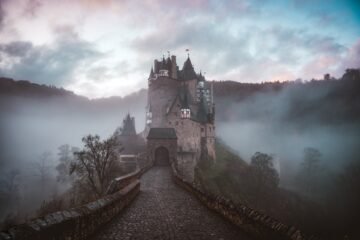Holding to the pacing of my plan for Arc 7 is already proving quite tricky. I’m very aware that this is the final arc, and consequently anything I want to be in the book needs to go in NOW. At the same time, I want to make sure that the pace keeps up and it doesn’t feel too drawn-out. But I also don’t want it to feel rushed…
This end of a story is always extremely difficult. There’s an inherent excitement to the beginning of a story and a useful flex to the middle of a story, while the ending of a story has to be tight and precise. A lot is riding on it, especially if readers have been going through the story for over two years. God knows the internet likes to tell creators if their story finales don’t satisfy.
Here we have the Aera Vision return. She’s a distracting voice in Tarn’s ear, although at this point it’s unclear whether that’s going to be a good or a bad thing. After all, she does have a vested interest in him surviving what’s to come.
There’s a lot of precedent for this kind of device in science fiction and fantasy. Farscape played with it wonderfully 20 years ago (dear god, 20 years??), as did Battlestar Galactica. A very different and more recent example comes from gaming, in the form of Hellblade: Senua’s Sacrifice. Yes, it’s an appalling name but the game itself is fascinating and deeply unusual.
In it you play Senua, a young woman who suffers from psychosis and hears and sees visions. The game was developed sensitively to deal with a serious topic, as I understand it (I have no direct experience so can’t comment to how well it achieve this), and the result is that you’re constantly bombarded by voices (especially effective if wearing headphones or playing in a good surround setup) and false visions. Knowing what is real and what is false becomes impossible and almost irrelevant: her response to what she’s experiencing is the critical element, more than being able to judge the truthfulness of it.
What we get here courtesy of Aera is the most direct examination of the historic ethnic cleansing that has occurred in the valley. This is in part a comment on fantasy and medieval fiction’s tendency to whitewash their settings and characters. That Lagonia is as it is comes from story rationale, but it’s also there as something of a meta commentary on the genre – and, more specifically, on the latent and perfidious attitudes from some audiences, who clearly want to keep certain fictions for themselves.
Anyway, what we have here is our heroes repeating the same journey that Pienya recently took, albeit from a different perspective. It’s always fun to revisit a location from a different character’s perspective. Going down into the hole clearly didn’t go too well for Pienya – let’s hope the others fare better.



0 Comments